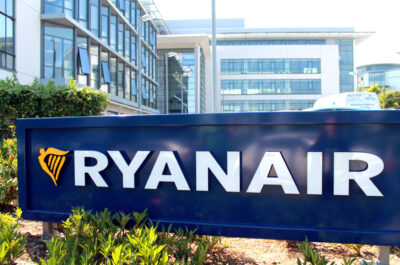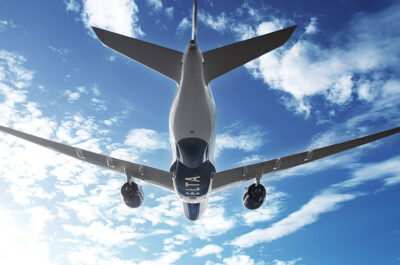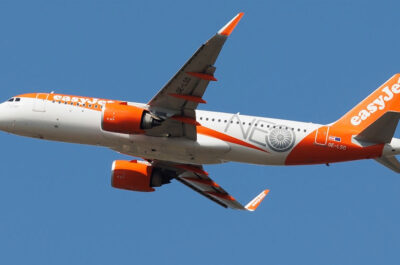More than 100 airports worldwide have invested in solar power, supplying a portion of their energy needs (and up to 100% in one case). The addition of wingtip devices to 8,300 in-service aircraft has saved around 56 million tonnes of CO2 in the last 15 years.
GENEVA – From solar power installations at a hundred airports around the world, to tablet computers for pilots, brand new aircraft designs and flights on fuel made with waste gas from steel plants, a new report released at the Global Sustainable Aviation Summit shows the aviation industry has embarked on a systematic programme of energy efficiency to reduce its climate impact.
The report, Aviation Climate Solutions, was released by the Air Transport Action Group, a global coalition of aviation partners promoting the sector’s sustainable development. Executive Director, Michael Gill said at the launch: “The case studies show the wide variety of climate action across the sector. Carbon emissions reduction projects by over 400 organisations in 65 countries are represented. But this is only a snapshot of the projects underway. The most impressive realisation is the sheer amount of collaboration between industry partners, helping to drive efficiency. Action is taking place in all parts of the world: not only at large organisations, but also through partners in emerging economies.
“Importantly, the report also shows how the industry is working to meet the goals it has set itself through the climate action framework announced at the same Summit in 2008. Through investing in new technology, making the operation of aircraft more efficient and developing better infrastructure, the sector is more than meeting its goal of a 1.5% improvement in fuel efficiency per year. The case studies in the Aviation Climate Solutions report point to just some of the projects making that a reality.”
In 2008, the aviation sector became the first to set global goals to proactively manage its climate change impact. The industry will stabilise its net CO2 emissions from 2020 through a concept called carbon-neutral growth, whereby traffic would continue to rise to meet the demands of society and the economy, but growth in emissions would be offset through a global market-based measure. The longer-term goal is to actually reduce net CO2 emissions from aviation to half of what they were in 2005, by 2050.
Key areas of climate action in the sector include: the development of alternative fuels; operational efficiencies such as using lighter equipment on board and taking-off, flying and landing in smarter ways; the development of new technology, both entirely new aircraft and components; and systematic changes in airspace and navigation.
Michael Gill says the report shows that not all projects are headline-grabbers: “Some actions are big: such as bringing a new aircraft to service; and some are smaller, but significant in their own way. This is a reflection of the aviation industry as a whole. We serve thousands of communities and over three billion passengers a year, but each journey tells its own unique story. It is also a reflection of what will be needed to tackle the climate challenge on a broader level. All parts of the economy and all parts of society have a role to play, with both small actions and large shifts in thinking.”
From the report:
- More than 100 airports worldwide have invested in solar power, supplying a portion of their energy needs (and up to 100% in one case).
- The addition of wingtip devices to 8,300 in-service aircraft has saved around 56 million tonnes of CO2 in the last 15 years.
- Over 2,000 commercial flights have already taken place using sustainable alternative aviation fuels which are now being brought into everyday use, including billions of dollars invested by airlines pre-purchasing alternative fuel to help kick-start the industry.
- Lightweighting, including the use of new slimline seats, carbon-fibre food service trolleys and stronger but lighter cargo and baggage containers is saving millions of tonnes of CO2 each year across the fleet.
- New technologies such as ‘performance-based navigation’ are having an impact on air navigation in remote parts of the world, helping the industry serve communities more reliably and with lower emissions in challenging environments.
- A number of organisations are empowering their teams to generate climate action ideas – employees can provide expert insight into the initiatives that will help cut emissions.
130 airports actively addressing their CO2 emissions
On the occasion of the Global Sustainable Aviation Summit organised by ATAG and currently taking place in Geneva, the independent programme Airport Carbon Accreditation announced the latest progress in the airport industry’s efforts to reduce and ultimately neutralise its carbon emissions.
Following the industry’s commitment to reduce its carbon emissions made 7 years ago, the intervening years since then have seen a critical mass of airports taking action to lower their impact on climate change through their participation in Airport Carbon Accreditation – the global carbon management standard for the airport business.
The programme certifies airports at 4 different levels of accreditation covering all stages of carbon management (Mapping, Reduction, Optimisation and Neutrality). It is independently administered, institutionally-endorsed1 and has already won praise from the International Civil Aviation Organisation (ICAO), the United Nation Environment Panel (UNEP) and the European Union (EU), the US FAA (Federal Aviation Authority) and many others.
130 airports across the 5 continents are currently certified under Airport Carbon Accreditation. These airports welcome over 29% of global air passenger traffic.
Speaking ahead of the COP21 climate negotiations – which are due to start in November in Paris – EU Commissioner for Climate Action and Energy, Miguel Arias Canete, praised the airport industry’s engagement in curbing carbon emissions: “It is reassuring to see an industry as visible and strategically relevant as the airport industry proactively addressing its carbon emissions. By allowing airports to work their way through 4 levels of certification, Airport Carbon Accreditation bridges their individual efforts and their collective achievement as an industry. With airports playing host to so many other companies, the past 6 years have shown that the programme is also having a halo effect on them, as airlines, air traffic controllers, retailers, passengers and surface transport also get involved to lower their CO2 emissions on the airport site. I congratulate ACI on the momentum they have achieved with this – bringing an industry-led climate change initiative which began here in Europe all the way to becoming the global standard.”
These are the latest developments over the past 3 months, in some of the key world regions:
- In North America, just one year on from the programme launch there, there are now 8 airports certified. The 2 most recent certifications are Denver International Airport and Dallas Fort Worth (DFW), both very prominent US airports, with cumulative traffic of over 100 million passengers a year. DFW is the very first US airport to achieve certification at Level 3 Optimisation, having successfully reduced its own CO2 emissions and engaged its local partners on the airport site to do the same.
- In Latin America, just 9 months on from the programme launch there, there are now 4 airports certified. The 3 most recent certifications are Quito International Airport, Tijuana International Airport and Galapagos Ecological Airport. In parallel, the first airport to become certified, Puerto Vallarta International Airport has succeeded in moving up to Level 2 Reduction.
- Meanwhile in Europe, in the past 3 months, Bergamo Orio al Serio and Ljubljana Airport, have moved up a level of certification, to Level 2 Reduction, having proven they have achieved carbon reduction.
- In parallel, Sydney Airport and 4 airports in the AOT (Airports of Thailand) group in Thailand have also succeeded in progressing to ‘Level 2 Reduction’. These developments are in addition to renewal certifications of airports in Belgium, Croatia, France, Sweden, Italy and Turkey. Europe now counts 92 certified airports, while Asia-Pacific has 25 certified.
In addition, airports which have firmly committed to apply in the coming months for certification at one of the 4 levels of the programme include Honolulu airport and San Francisco International Airport in North America as well as Libreville Airport and Abidjan Airport in Africa.
ERA endorses industry call for governments’ help to deliver the aviation industry’s climate goals
The European Regions Airline Association has signed up to an aviation industry-wide call for governments to join with the sector and take action on climate change.
The Air Transport Action Group (ATAG), which represents a coalition of aviation industry partners working to promote sustainable development in aviation, has co-ordinated an open letter to governments signed by 28 aviation industry CEOs and association leaders, including ERA, who reaffirm their commitment to a carbon-neutral pathway for aviation through a range of measures, including those being developed at the International Civil Aviation Organisation (ICAO).
Simon McNamara, Director General of ERA, says: “ERA and its members take their environmental responsibilities extremely seriously and we are working hard to promote a sustainable future for the sector. Our members are already showing their commitment by complying with the EU ETS **** scheme, as well as implementing their own fuel-saving initiatives.
“ERA fully supports and endorses the protection of the environment, co-ordinating industry policy and promoting the aviation industry’s considerable achievements to reduce its impact. ERA also works very closely with ATAG and is proud to be part of this commitment by the aviation sector to drastically reduce CO2 emissions through meaningful market-based measures. However, government endorsement and support is vital.”
Michael Gill, Executive Director of ATAG, adds: “The whole commercial air transport industry is united in its efforts to reduce emissions and increase fuel efficiency and renewable energy opportunities. Today’s letter solidifies that support with a personal commitment from industry chief executives that their businesses will continue to pursue our sector-wide goals of maximum CO2 emissions reduction. As an industry, we have already invested billions of dollars in efficiency measures and we now call on governments to help us further those efforts and support an even more sustainable future for flight.”
Tatiana is the news coordinator for TravelDailyNews Media Network (traveldailynews.gr, traveldailynews.com and traveldailynews.asia). Her role includes monitoring the hundreds of news sources of TravelDailyNews Media Network and skimming the most important according to our strategy.
She holds a Bachelor's degree in Communication & Mass Media from Panteion University of Political & Social Studies of Athens and she has been editor and editor-in-chief in various economic magazines and newspapers.





































































































































































































